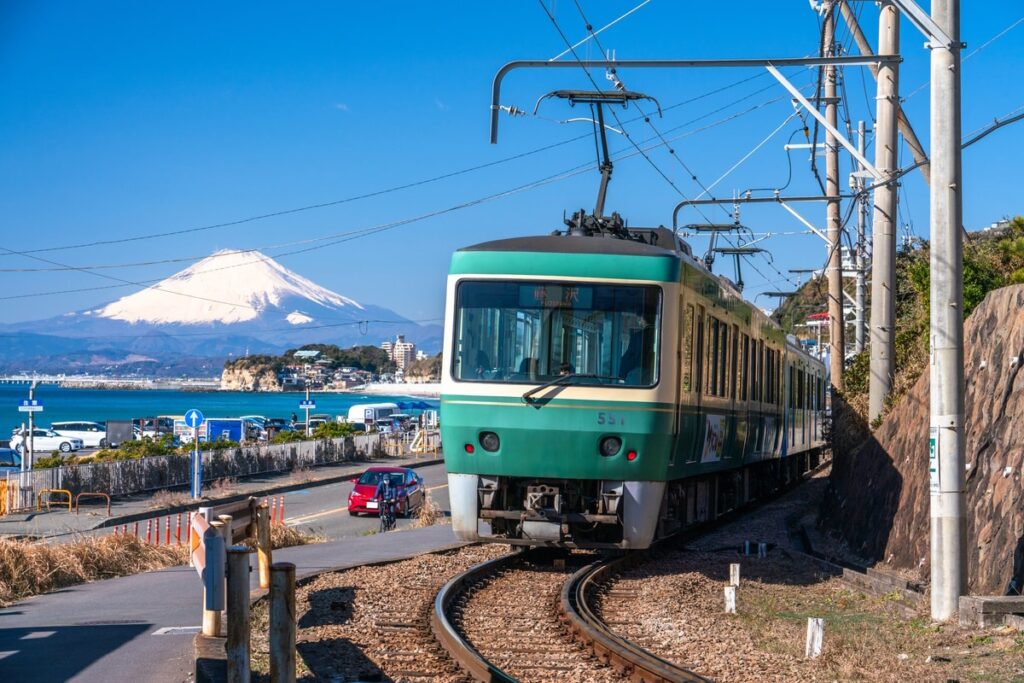[ad_1]
With tourism in Japan back in full swing, more people are flocking to scenic Kamakura than ever. So why is the area’s most famous train running fewer trips? Here’s why the train’s operator says running on a slower schedule will help reduce congestion – and why the residents aren’t happy about it.
A consistent theme in Japan’s news coverage this year is the return of tourism. Domestic tourism started recovering slowly last year. This year’s Golden Week ushered in a return to pre-2020 levels of in-country reverie.
But tourism is a double-edged sword. It’s a big boon for businesses both large and small. Many of Japan’s older shops (老舗; shinise) specializing in traditional crafts and food faired poorly during lockdown. In 2022, some 1,045 businesses older than 30 years old shut their doors.
One area that’s struggled with tourism is the Kamakura/Enoshima area. The area along Japan’s Shonan Coast has a breathtaking beauty that in itself draws hordes of visitors year after year. Kamakura, a former seat of shogunal power during the (naturally) Kamakura Era, has a deep history. The famous Daibutsu (Great Buddha) of Kamakura dates back to 1252.
Another famous attraction is the Enoshima Railway (江ノ島電鉄; enoshima dentetsu), also known affectionately as “Enoden” (江ノ電). Originally built in 1900, the train runs along the Shonan Coast, connecting the cities of Fujisawa and Kamakura and providing access to the island of Enoshima along the way.
Advertisements
As Web site Waraku Web puts it, the Enoden has an almost “idol-like existence” among tourists as well as railway fans. It’s also a huge attraction for manga and anime fans: The Kamakura High School crossing was made famous by Slam Dunk and now functions as an otaku “holy ground” (聖地; seichi).
Less trains = less crowding?
Kamakura residents have already fumed about the return of tourists, particularly around the famous Kamakura High School crossing area. Too many tourists stand in the middle of the street leading down to the train to grab pictures. Police have had to step up patrols to help shoe people back onto the roadside.
Residents and tourists also face another issue: overcrowding on the Enoden. The train only has two cars, meaning its capacity is limited. For 71 years, it’s run every 12 minutes, meaning there were 5 departures per hour.
With the return of tourists, the train is often so crowded that residents can’t efficiently get around town. The issue is compounded by train delays, as the Enoden crosses paths with other trains in the rail system.
To address some of these issues, Enoshima Railway has come up with a counter-intuitive strategy: it’s decreasing the number of trains per hour. The Enoden now runs every 14 minutes, meaning that, for most hours of the day, there will only be four departures.

Pressed by Toyo Keizai about this decision, a manager for the Enoden said that the worst delays on the line come from the train conflicting with other trains on the system. The new schedule is designed to reduce the number of trains crossing or occupying tracks simultaneously.
The manager said that Golden Week seemed to prove this hypothesis. Despite immense crowds, there were no delays in trains departing or arriving all week. Before the pandemic, the train experienced around 400 delays every year.
Is the new schedule confusing?
While the new schedule may be more efficient, it’s harder to understand. On the old, 12-minute schedule, trains always left at exactly the same time. On the new 14-minute schedule, departure times are different every hour of the day.

Long-time residents expressed frustration at the change. People who were born and raised in the area say the 12-minute pattern is so ingrained, it’s like part of their DNA. They say they’ve never even had to look at the train schedule until the change.
High schoolers interviewed by NTV said the locals even had a lingo for which train to catch together. If you wanted everyone to meet you at the station to board the 7pm train, for example, you’d tell people to meet you for the「7え」(nana e). Likewise, the 8pm train would be the 8え. That system, of course, is now ruined.
Enoshima Railways said they’re aiming to create a schedule that accommodates both tourists as well as locals. For now, however, it sounds as if the locals will need some persuading that this is a change for the better.
Sources
江ノ電の行先表示がかわいい!江ノ島電鉄の歴史とともに魅力を紹介. Waraku Web
大混雑なのに運行本数減らした「江ノ電」戦略の妙. Toyo Keizai
【江ノ電】71年ぶりダイヤ改正へ 地元住民“困惑”染みついた12分間隔. YouTube
[ad_2]
Source link




